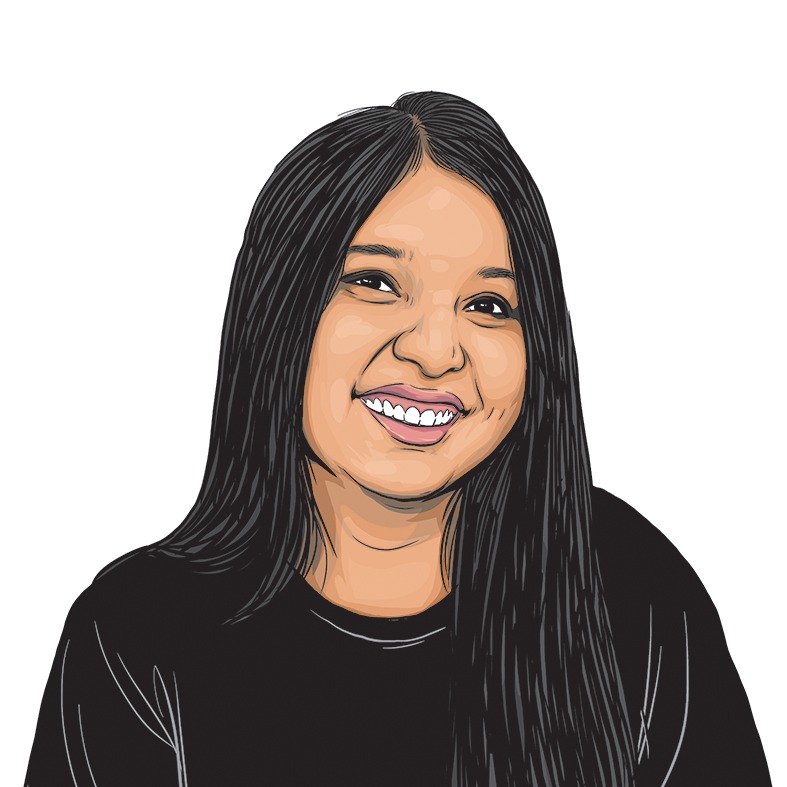Opinion Who’s my neighbour: When body becomes the border: Wheelchair changed the way I looked at my neighbours
Spaces that once connected me to my neighbours now kept me out
 For me, it has never been just the family next door. It is the soldier polishing his Enfield, the vendor outside the Metro, the stranger who notices my struggle with a lock
For me, it has never been just the family next door. It is the soldier polishing his Enfield, the vendor outside the Metro, the stranger who notices my struggle with a lock It’s often the simplest words that make us pause. The mention of “neighbour” stirred a moment of quiet reflection in me.
Born into an Army household, where moving every two or three years was part of life, I grew up with a fluid sense of neighbours and neighbourhoods. At one posting, our neighbour could be a family from Tamil Nadu; a few months later, someone from Mizoram. My earliest sense of neighbourhood was not about fixed addresses or familiar walls, but about a larger ecosystem — the regiment, the unit, the families who stood together like one extended household.
My “neighbours” included not just people but also the world we inhabited: Colonial bungalows with sloping roofs, bright dahlias lined along red-and-white brick paths, eucalyptus trees shading the roads, Enfield motorbikes rumbling past, Army gypsies and trucks parked neatly under banyan trees. There were temples and dargahs, railway tracks and parade grounds, all folded into the rhythm of daily life. For me, a neighbour was never just the person next door; it was an entire ecosystem that held me.
When I moved to Delhi more than a decade ago, I carried this sense with me. For the first few years, I experienced the city as an able-bodied student: Rushing into Metros, hopping onto buses, renting flats, making friends at university. My neighbours were not limited to the people in the adjacent flat, but also the guard at the gate, the vendor near the bus stop, the co-passenger on the Metro. Delhi, like the cantonments of my childhood, was a vast and complex neighbourhood.
But life changed when I began using a wheelchair. My body made way for a different way of seeing — and being seen. The same spaces that once connected me to my neighbours now kept me out. A housing society without ramps meant I was dependent on others to even enter my own flat. A Metro ride became a daily negotiation of locked gates, out-of-order elevators, and delays that made me late to class. Boarding a train meant being lifted like luggage into an AC coach, dignity stripped away despite paying the same fare. Autos, cabs, even washrooms in workplaces — all turned into reminders that my neighbourhood was built without me in mind.
Sociologists describe neighbourhoods not just as spaces of residence but as networks of participation. Yet when infrastructure itself excludes, it is not just mobility that is denied — it is the chance to form bonds, to belong. Inaccessibility makes neighbours distant, reducing encounters to glances rather than connections. It is a quieter form of marginalisation where the body becomes the border of one’s neighbourhood. The Constitution’s guarantee of dignity and the Rights of Persons with Disabilities Act, 2016, both promise accessibility as a matter of right, yet the lived experience of exclusion shows how far we still are from making those guarantees real.
For me, the body has always been the first site of the neighbourhood — as a child running freely through cantonment lanes, and now as a wheelchair user negotiating steps, gates, and silences. The way my body moves — or is stopped — reshapes who my neighbours are, and how I belong. It is through this embodied lens that I have learnt that exclusion is never the whole story, and that compassion quietly shines through in the smallest cracks.
Over the years, I have noticed the small, human gestures that quietly remake my neighbourhood: A security guard who carried my wheelchair when the ramp was flooded, a housekeeping staff member sprinting with keys to open the side gate at the Metro, a passerby shielding me with an umbrella in the rain. These are not neighbours by address, but by presence. They remind me that neighbourhoods are made not only of bricks and bylaws but of fleeting acts of solidarity that linger.
So, who is my neighbour? For me, it has never been just the family next door. It is the soldier polishing his Enfield, the vendor outside the Metro, the stranger who notices my struggle with a lock. My neighbourhood has often reminded me of exclusion, of how easily one can be made invisible. Yet, it has also shown me that, in spite of systems that fail us, people can — and do — choose to show up. And perhaps that is the truest neighbourhood of all: One where dignity is not left to chance, but shared in the small, everyday acts of those who choose to stand beside you.
The writer is a Delhi-based researcher and writer






